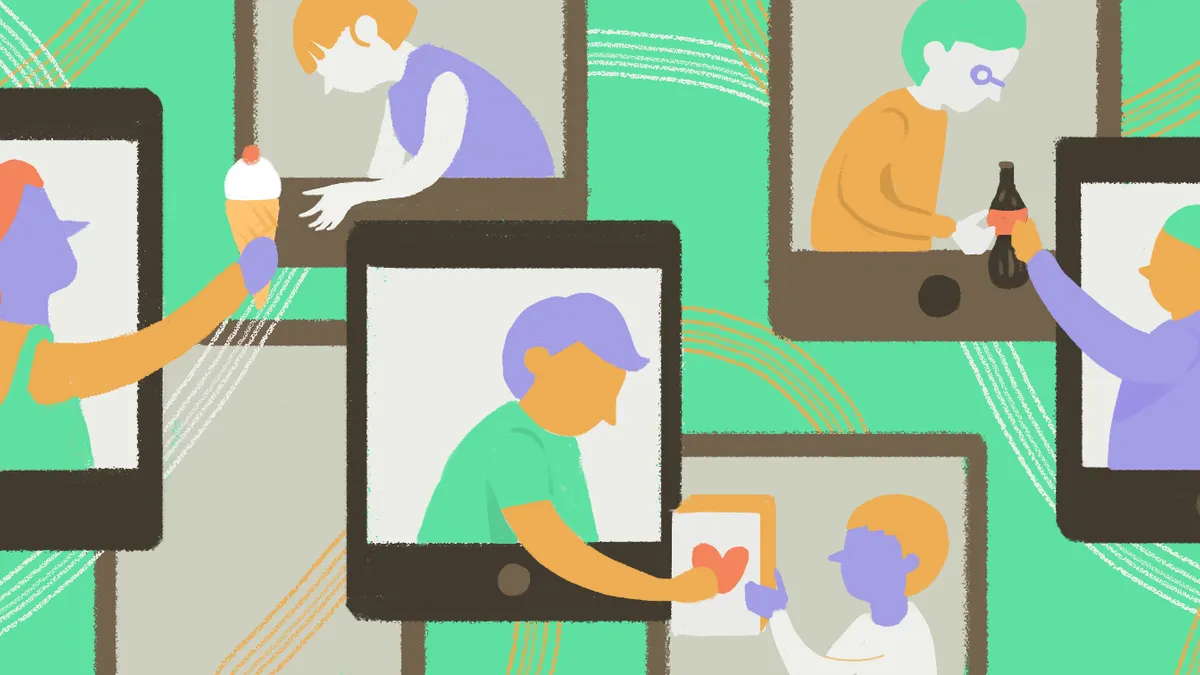Largely driven by the rise of online shopping, some food companies are taking their products online, while some startups are ditching brick-and-mortar stores all together.
Selling direct to consumer through e-commerce gives consumers better control over their supply chain and cuts down on middleman costs. As e-commerce continues to grow, consumers are expecting a seamless and personalized ordering process.
When selling direct to consumer, companies can control the customer's journey from when they arrive at the site to the check out process. It allows them to control the brand's story and cultivate relationships with customers that can transcend retail shelves. Unfortunately, brands may not have the insight, resources, or technology that retailers have accrued over years that can make providing a seamless shopping experience a challenge.
Food companies have been trying to get into e-commerce, but it wasn’t always a slam dunk, associate manager of new products at Ben & Jerry's Jody Eley told Food Dive.
Creating an online marketplace
In order to be successful, e-commerce efforts must be supported by strong marketing — especially in the United States, where grocery e-commerce isn’t as popular as it is overseas, Greg Pulsifer, vice president of global e-commerce at General Mills told Food Dive.
Brands use tactics and strategies like organic and paid search, ratings, reviews, creative copy, and banners to promote their products online, John Carroll, general manager of e-commerce at Coca-Cola, told Food Dive.
General Mills packages foods together to create what it calls an online “meal solution.” The brand has a variety of products that it can create a breakfast solution using only its own products. Large companies like General Mills have a expansive portfolio of products and can offer a one-stop shop to consumers that aren't keen on placing many orders on different websites.
“We can combine frozen frozen goods that we make through Pillsbury. We can take a yogurt through Yoplait and we can take granola through Nature Valley and combine those together to offer a meal solution,” Greg Pulsifer, vice president of global e-commerce at General Mills told Food Dive.
Ben & Jerry’s site allows customers to buy ice cream in bulk or limited time online-only flavors. The web-exclusive flavors included Marshmallow Moon, which was made in partnership with "Tonight Show" host Jimmy Fallon.
“The big part of the experience is really driven around content. It's the ability to tell a brand story and the way that comes to life.”

Greg Pulsifer
Vice president of global e-commerce, General Mills
Bear Naked, owned by Kellogg, created a website that allows consumers to create their own granola with the help of IBM’s Chef Watson. Watson chooses which ingredients would taste good together based on the chemistry of the ingredients and how they’re often combined. Customers also have the choice of opting out of Chef Watson's advice and making their own granola mix. Ingredients include chocolate covered espresso beans, bacon, bourbon, matcha, pretzels and dried black olives.
“The big part of the experience is really driven around content. It's the ability to tell a brand story and the way that comes to life,” said Pulsifer.
General Mills uses video imagery and rich copy to get consumers excited enough to write a vibrant review and recommend the products.
Brands can also reach consumers through partnerships. Coca-Cola, Kellogg and Campbell Soup joined forces with Chef’d to include their products in the company's meal kits. The idea was a good one in principle — with Campbell Soup investing $10 million to increase sales and gain consumer insight — but did not work out as planned with the abrupt shutdown of the meal kit company.
But it's not all about partnerships. Campbell Soup has its own website where consumers can shop for products directly. The website includes special "craft" soups in glass containers instead of the metal cans found in grocery stores. The new packaging is meant to appeal to millennials who look for fresh, premium products.
In August 2017, Unilever tested direct-to-consumer shopping when it partnered with European grocery delivery service Quipup to include its Hellmann's mayonnaise products. Unilever is also one of the dozens of CPG brands to partner with Quipup's North American equivalent, Instacart.
Many CPG brands have invested in growing number of click and collect programs and home delivery services like Instacart and direct orders through Amazon. Late last year, Kellogg reported that e-commerce sales grew by 70% and shows promise — even though e-commerce currently makes up just 2% of the food industry, Kellogg CEO John Bryant said during a company presentation in September.
Benefits of bypassing the grocery store
CPG companies often use their e-commerce platforms to test out new or long tail products since more information can be collected online than in stores and more products can be offered. In cities like New York, there aren’t grocery stores large enough to offer a full freezer of Ben & Jerry’s, so consumers are choosing between a few flavors, said Eley. And in some situations, consumers don’t want to lug around a case of Coke when they could have it delivered right to their door, Carroll said.
Large retailers don’t have the capability to do a quick limited batch of products that would force them to reset shelves.
“If I am a grocery retailer, I could see this as an opportunity to have someone else experiment and see if there’s a demand for a product that I could then lift in my stores,” Michelle Grant, head of retailing research at Euromonitor International, told Food Dive.
"If I am a grocery retailer, I could see this as an opportunity to have someone else experiment and see if there’s a demand for a product that I could then lift in my stores"

Michelle Grant
Head of Retailing Research at Euromonitor International
That’s why large CPG brands with hundreds of products are looking for new ways to go direct to consumer that wouldn’t be too large to scale, expensive to fulfill or compete against grocers who are critical to the brand’s success, said Pulsifer.
Although most retailers and brands are threatened by Amazon, most companies have partnered with the ecommerce giant to sell their products. Campbell Soup has hired a former Amazon and eBay executive to oversee the digital and ecommerce initiatives in order to bulk up its online efforts.
Ben & Jerry’s doesn’t see Amazon as a threat and sells ice cream to consumers through the mega-retailer. Eley said customers who want a pint of ice cream or a large quantity of the same flavor will buy from Amazon, but those who want a variety of products in bulk, a gift, or an exclusive flavor buy directly through Ben & Jerry’s.
The pressure from Amazon-Whole Foods has forced brands to step up their e-commerce efforts. In 2015, Mondelez announced the goal of selling $1 billion online by 2020.
As the trend of selling direct to consumer continues to grow, so do the implications. There are a billion smartphone and computer owners who can demand services immediately now. and as everyday life moves to the internet, so does grocery shopping.
Brands and grocers need to prepare for boost in direct to consumer demands in the United States. Brands specifically need to create a unique direct to consumer model that isn't difficult to scale or expensive to fulfill.
"It has to be a unique approach. It has to be a unique business model and I think, like I said, I don't know that there's a lot of people out there in the CPG space who are doing it," said Pulsifer.


















